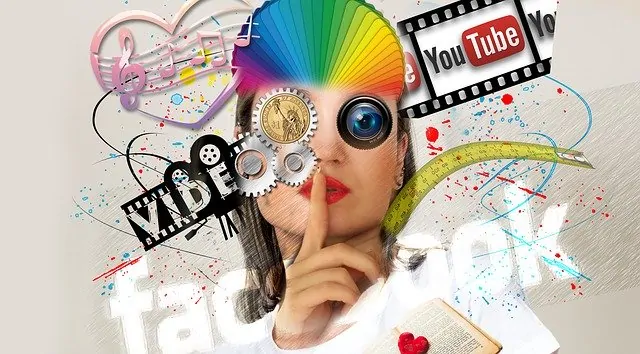Wow! That escalated quickly! If you’re run or own a business, the entire landscape changed drastically sometime around the beginning of March. By now you’ve been locked down for some time and are trying to figure out who might still be potential customers and who won’t be around much longer. A little scary, yes. Impossible? No. We can do this.
First, let’s start with the obvious trends. Business is down. People are not out and about. Most people are home and working. Some are more productive than others, but they are working. This is the time that most people have started to go through a set of emotions and thoughts that will either bring them out quickly or suppress them into depression. Many people are angry and in denial about the direction things are headed. “What do you mean we need to lock ourselves down in our homes for a month? How am I supposed to make a living?” We’ve all thought it.
With all these changes, who really knows what is going to happen. One thing is for sure, at some point, businesses will be open and people will be happy to get out of their homes. This might be an excellent time to create a strategy. What opportunities lie ahead as we approach the end of this quarantine? What should I be doing now that will bring me out and open for business faster than my competitors?
Before you get too far ahead, we want to share something else with you. Here’s what we’re noticing.
Right now, we have observed something incredible. The number of people online every day is incredibly high. There has been a HUGE spike in online video viewing. We’ve seen it with Jenn Jager’s YouTube page. We’ve heard on the news that Netflix and YouTube have decreased streaming video quality to keep the bandwidth open.
Here’s the secret opportunity that’s happening right now
Everyone is at home. They’re watching more videos on YouTube than ever before. What typically plays before a video? Advertisements. That’s where the magic is happening right now. Now is the time to seize the opportunity. It’s time to create a small business video that can talk about your who you are. This is particularly true if it relates to a product or service that serves the community well.
Not only are the number of viewers up, the number of companies paying for advertising is way down. Simple supply and demand says prices are falling for ad placement. Are you taking advantage of that? Here’s one trend you should not miss!
If you don’t have a landing page, now might be the time to create one. It takes a little bit of work, but if you do it right, you can place an explainer video that brings a potential customer to a sale. Almost any landing page product works. Make it easy to buy and easy to understand what the offer is.
We still need to stay connected…just do it separately.
How do you build trust but not sit across a table to sell? Think digital marketing and video. With YouTube Ads (and even television ads) you have the opportunity to speak directly to your target audience to possibly garner trust. Depending on the type of content you’re creating, your video content should promote connection and relationships. If you’re going to create online video, you’ll also want to think about how to keep it branded.
Brand videos speak to the overall brand of the business, the people who work there, and the mission of the business. Do you need to have a big video production company come in to your videos? Maybe. But for now, doing it yourself is not all bad. Need some tips on how to do it yourself? Check out Jenn’s YouTube Channel (Video Marketing Your Business) where she educates viewers about apps, lighting, and equipment that she recommends if you’ll be doing it yourself.
When it’s time to really increase sales, you might consider hiring a crew to create a more brand sensitive video that sells you and your business. You might consider starting that process now so you can be one of the first on the crew’s schedule once they can come out of their homes.
How Do I Create a Video While Under Quarantine?
If you want to create videos while under quarantine, you’ll need to think about how to do it without other people being involved. There are a couple of ways…
Footage. First, there is the use of footage you had shot professionally before the lock down. You can use those clips of B-Roll (secondary shots) by adding professional narration, some licensed music, and 2D graphics. This can be all you need to keep your brand out in front of your target audience.
Graphics. Another option is the use of only 2D graphics as the entire video. We’ve all seen the CDC’s graphics video that shares who is at risk and what we should be doing now to protect ourselves. This video contains just graphics and music. It’s effective because the viewer can follow along while getting the point of the video. In that video, its more of a public safety message, but the same can be done with any business. They’re rather straight forward to create and reasonably effective. Here’s that video:
Whiteboard. Another option is whiteboard video. This isn’t something we do a lot of, but we do have a course that we share how to use some of the features of Doodly. Jenn created it and a lot of people have bought it so they can be better at using the software. Here’s a link to Jenn Jager‘s new page where the lessons are and where you can get a copy of Doodly.
Stock Video. Finally, there’s stock video. We sometimes use stock video to add some depth to a video. This might be a good time to use it since you can’t shoot more video. Consider using some footage you’ve already captured and adding some stock video to make a point you hadn’t in a previous project. Or, simply use stock video to create an entirely new video. We’d simply add narration and some graphics to give a fully finished feel. Here’s one we created using only stock video, professional narration and animation.
All of these are valid options to shooting a video with a crew. It can certainly get you by for the next several months. If you plan correctly, you’ll be positioned to be the first company to call when the restrictions loosen up.
If you have questions, reach out to us. We’re happy to help.



















